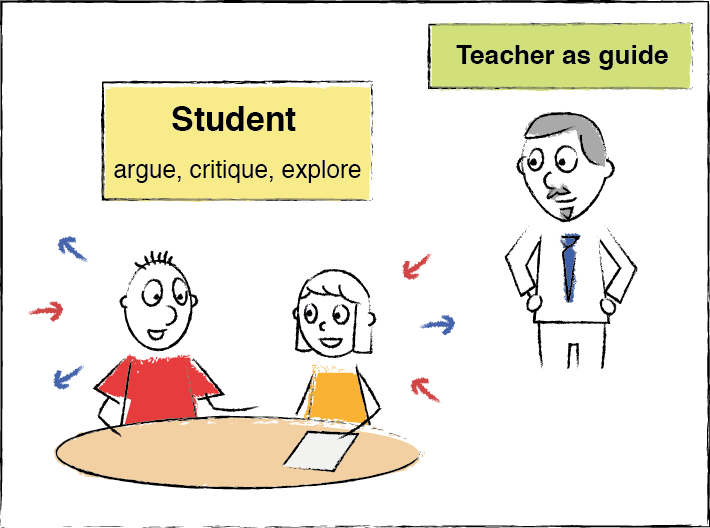Delivery
Learning environment
A number of our international and local or returning students have experienced quite different learning environments, including more formally structured, teacher-directed learning settings. There is an expectation that the teacher is the expert and their role is to inform and instruct. This can lead to confusion around the roles and responsibilities of teachers and students in the class.
Effect on students
Some students initially may not understand our expectation that they will take a more active role in their learning, including in group learning. They may not be aware of what is required of them as independent learners.


Structure opportunities in class for students to ask questions and clarify their understanding of course content to stimulate and improve their learning experience.
Using questions in class (PDF 68KB)
To develop analysis, synthesis and evaluation skills in your students, explicitly model the critical thinking process in your lectures and tutorials.
Consolidate learning by incorporating activity breaks and discussion opportunities to allow students to assimilate concepts and ask questions.
| Time (min) | Topic/activity |
|---|---|
| 5 | Introduction |
| 5 | Topic 1 |
| 10 | Activity 1 (pairs) |
| 10 | Topic 2 |
| 15 | Activity 2 (small groups) |
| 5 | Summary |
Add activities here to consolidate and revise content. Incorporating activities may require you to streamline the amount of information delivered. To do this:
- organise concepts (information) by categorising (chunking) in order of importance (ranking)
- take a 'helicopter' view - use overarching learning outcomes or objectives as a guide, then teach directly to these outcomes.
- explicitly direct students to further readings if required
- discuss these readings
- encourage 'active' reading through questions.
Lesson plan (Template) (DOCX 125KB)
Teaching students from diverse backgrounds (PDF 61KB)
- Demonstrate good academic practice to students through your teaching
- Develop students' awareness and use of citations (paraphrasing and quotations), referencing and critical analysis. Demonstrate these through your own teaching materials.
- Build in activities based around lecture chunks or concepts to consolidate/assimilate information.
- Develop active listening strategies by linking exercises, such as question/gap-fill exercises, to your presentation.
Help students adopt discipline terminology by gradually introducing and encouraging their use of discipline specific language to discuss key ideas. Also consider how you deliver information, using pauses, directive words and paraphrasing with spoken and visual emphasis.
Integrating language-focused activities in the tertiary classroom (PDF 69KB)
For more tips and resources on delivery techniques, see the section on teaching in the Guide to Teaching.
